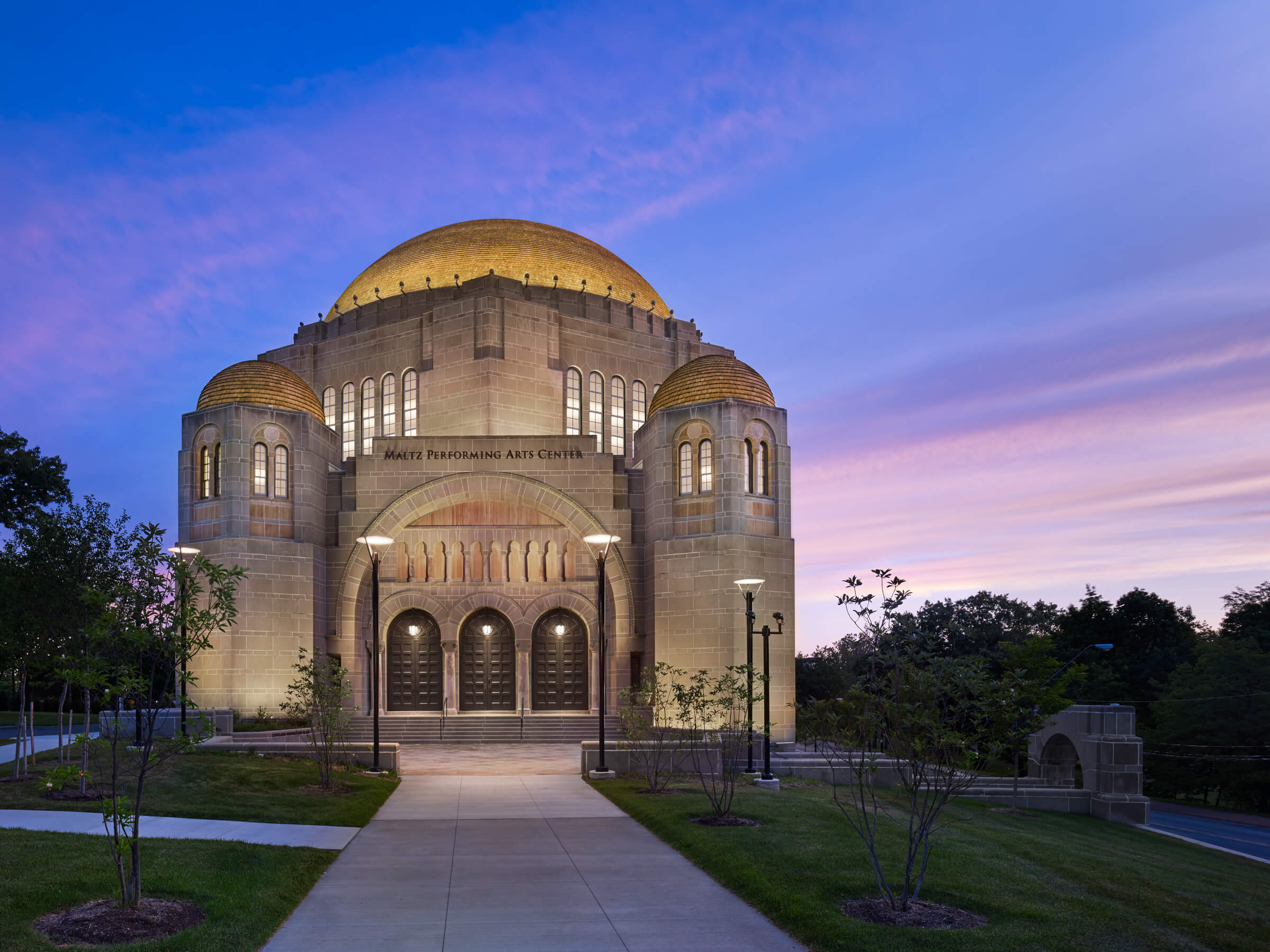September 27 marked the opening of the newly renovated Case Western Reserve University’s Milton and Tamar Maltz Performing Arts Center.
The design team, led by MGA Partners, transformed the historically landmarked Temple-Tifereth Israel in Cleveland into the university’s performing arts center. The Lighting Practice accented the former Synagogue’s unique architectural interior and exterior features using only white LED lighting. TLP’s specifications for the refurbished historic light fixtures included replacement of incandescent sources with warm white LEDs, which preserves the historic ambiance of the sanctuary while reducing the university’s operating costs. TLP worked closely with the design team and contractors to provide a facility that celebrates its architectural heritage while employing the best of modern technologies. The goal of the project was to successfully design, restore, illuminate the space.
First Look: Renovated Temple-Tifereth Israel opens in one month as CWRU’s Maltz performance center (photos)
CLEVELAND, Ohio – The city’s newest performing arts center is exactly one month away from its debut.
A 3 p.m. “Violins of Hope” concert on Sunday, Sept. 27, will kick off The Temple-Tifereth Israel’s new life as Case Western Reserve University’s Milton and Tamar Maltz Performing Arts Center.
The sold-out performance will launch the new life of a masterpiece of early 20th-century religious architecture that has been renovated to serve as the home of CWRU’s programs in music, dance and theater.
Meanwhile, the Temple congregation, which essentially donated the building to CWRU, is renovating its Beachwood campus as its principal home.
Collaborating to save a masterpiece
Yet under a deal with the university, the congregation will retain access to its historic University Circle facility for 99 years to use it for eight days a year on major holidays and for additional events as negotiated with CWRU.
In the September concert, members of the Cleveland Orchestra with soloist Schlomo Mintz will perform on historic violins once played by Jews imprisoned during the Nazi Holocaust.
The concert will be simulcast live on WVIZ/PBS and WCLV 104.9 FM and live-streamed on ideastream.org and to remote viewing sites throughout Cuyahoga County.
The performance is part of a larger collaboration, including an exhibition focused on the violins at the Maltz Museum of Jewish Heritage in Beachwood.” to remote viewing sites throughout Cuyahoga County as part of a larger collaboration, including an exhibition focused on the violins at the Maltz Museum of Jewish Heritage in Beachwood. (For details, visit the Violins of Hope website).
The concert should be a fitting unveiling for the Temple project, for which CWRU has raised $59.3 million so far, and which is shaping up as an outstanding example of adaptive reuse.
Built-in 1923 and designed by Boston architect Charles Greco, the Temple, at 1855 Ansel Road, is an imposing, streamlined modern interpretation of Byzantine and Romanesque motifs, with a majestic, golden-hued dome.
The American Institute of Architects’ “Guide to Cleveland Architecture” rightly likens the building’s design to the Hagia Sophia in Istanbul.
Viewed from heavily traveled East 105th Street, which it abuts, the Temple offers a mountainous profile studded with exotic details such as column capitals decorated with six-pointed stars carved to look as if they were made from braided cords.
Listed on the National Register of Historic Places, the building has an unusual, seven-sided sanctuary originally named for Abba Hillel Silver (1893-1963), the important Zionist leader who served as the congregation’s rabbi from 1917 until his death at age 70.
A gentle touch
The sanctuary, which has been sensitively renovated as an auditorium, has been renamed Silver Hall by CWRU.
A visit to the Temple on Monday showed that the university and MGA Partners Architects of Philadelphia have approached the renovation with a respectful and light touch.
On the exterior, the building’s Indiana limestone facades have been beautifully cleaned and “repointed” with fresh mortar.
The work, which removed decades of black soot and grime, has created the striking, back-to-the-future impression that the 92-year-old building is actually brand-new.
In an email, the Temple’s rabbi, Richard Block, wrote that he was “stunned by the beauty of the building’s exterior and interior surfaces” during a visit a month ago. “Truthfully, I was moved to tears,” he wrote.
Click to read the full article: First Look: Renovated Temple-Tifereth Israel opens in one month as CWRU’s Maltz performance center





